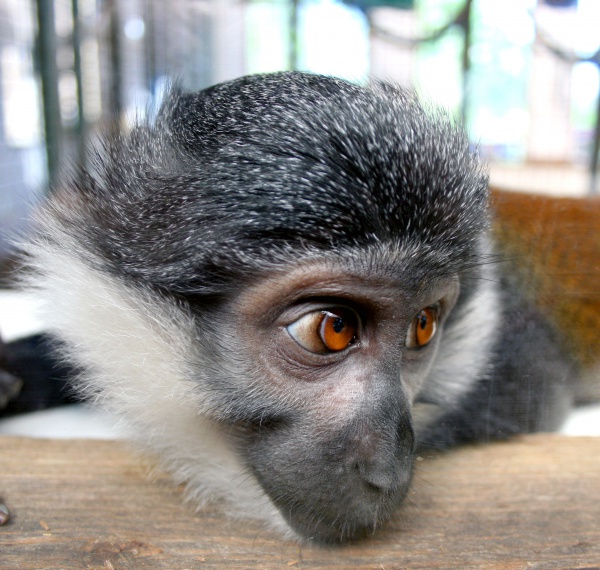Facts About L'hoest's Monkey
L'Hoest's monkey, also known as the mountain monkey, is an intriguing primate species inhabiting the upper eastern Congo Basin. These monkeys thrive in mountainous forest regions and typically form small, female-dominated groups. They are easily identifiable by their dark coats and distinctive white beards.
In terms of classification, L'Hoest's monkey belongs to the genus Allochrocebus. They were previously classified under the genus Cercopithecus, but recent molecular studies have shown that they are more closely related to vervet and patas monkeys. Interestingly, Preuss's monkey, once considered a subspecies of L'Hoest's monkey, is now recognized as a separate species.
Physically, L'Hoest's monkeys have short, dark brown fur with a hint of chestnut on their back and a white bib on their chest. Males typically weigh around 6 kilograms, whereas females are lighter, weighing approximately 3.5 kilograms. These monkeys are born fully furred with their eyes open, ready to engage with their environment from birth.
L'Hoest's monkeys are found in the Democratic Republic of the Congo, Rwanda, Burundi, and Uganda. They prefer forested environments, including lowland rainforests, wooded savannas, and forest edges. Being diurnal animals, they are active during the day and sleep in trees at night, usually in a sitting position.
Behaviorally, L'Hoest's monkeys live in female-led groups with a single male. The male makes distinctive calls to communicate, and the group spends most of its time on the ground. Breeding is seasonal, with females giving birth to a single baby after a five-month gestation period. Their diet is diverse, primarily consisting of fruits, mushrooms, herbs, roots, and leaves, with occasional consumption of eggs, lizards, and small birds.

 Rwanda
Rwanda